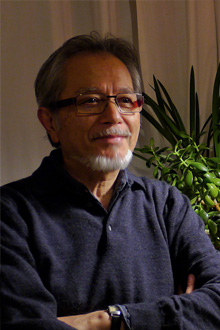

I had rarely used my Leica X1 for few years since I bought it. It has been stuck in my car’s door pocket collecting a coat of dust. It does take great “Leica” quality pictures, but I always prefer using the M8 and the M9. But, these days, I started to hear the voice from the bottom left of my car, “You’re just keeping me on the payroll! Then why did you buy me?” So, I decided to take it to street shooting as a main camera accompanied by the M9 with the Thambar as a sub, which is a rare combination.

But, it’s no fun to shoot normally, so I set it to monochrome mode to see how it goes. Because I accidentally set the contrast high, I couldn’t use the JPEG. So, I converted the RAW data into monochrome. However, there were some cases that JPEG images straight from the camera were better than the ones I developed.

At first, I was shooting with AF but it was slow (the X2 has improved AF, I heard) and I lost the right timing to shoot and couldn’t freeze the subjects. So, I set the focus manually and shot using depth of field.

The real pleasure of snap shooting is capturing people of a moment. In this sense, the X1 is handy and has a great potential to be a nice partner if it’s used effectively. I wasn’t overly conscious of the fact I was shooting monochrome and tried to shoot as usual.

The quintessence of monochrome photography is said to be silver-halide developing and prints. I used to shoot monochrome films, but I can’t talk seriously about it because I haven’t been through such process. I don’t have the knowledge to understand its unique taste, either. But, it looks nostalgic and the fresh monotone revitalizes my right brain.

It’s hard to assume what kind of subjects are suitable for monochrome photography and what kind of lines they make with light and shadow. Will I start feeling it as I keep shooting what attracts me in terms of atmosphere? I once fell into the state I couldn’t even hold my camera after I became overly conscious and nothing looked worth shooting.

I think great monochrome photographers can see things in monotone while imagining the print. I can’t do that, so I wish I had a pair of glasses that lets me see things in monotone.

For now, I don’t shoot for artistic expression, but I just shoot naturally only when there’s a reason to shoot the subject as a photographer Paul Strand said.

It’s tonality that decides the texture of monochrome photography, so exposure becomes more crucial than color photography. Although modern cameras are so advanced, the original image has to be shot with perfect exposure. So, this time, I didn’t use the AR, but set ISO manually and used a GOSSEN exposure meter to determine the aperture and the shutter speed.

I had a chance to have a lunch with Takahiko Ono, who is an educator, a businessman, and a photographer. I cannot forget what he said – “Monochrome photography is like a haiku” because it was so deep.

I’ve also looked for books on monochrome photography, but most of them only talk about tools, procedures, and techniques. In order to truly understand monochrome photography, I guess I need more experience.

I suddenly came across the private scene right after I stepped into the alley. How sweet! I couldn’t move for a moment. I had decided to shoot only monochrome, but this spring scene has to be shot in colors, don’t you think?
 Scott Tsumura
Scott Tsumura
Lives in Bellevue, Washington, USA
Executive Producer of Tozai Inc.
>> Mr. Scott's blog " shot & shot "
>> Tozai Inc. Official Website
>> Tozai Games Official Website
> The Wind from Seattle Vol.23
> The Wind from Seattle Vol.22
> The Wind from Seattle Vol.21
> The Wind from Seattle Vol.20
> The Wind from Seattle Vol.19
> The Wind from Seattle Vol.18
> The Wind from Seattle Vol.17
> The Wind from Seattle Vol.16
> The Wind from Seattle Vol.15
> The Wind from Seattle Vol.14
> The Wind from Seattle Vol.13
> The Wind from Seattle Vol.12
> The Wind from Seattle Vol.11
> The Wind from Seattle Vol.10
> The Wind from Seattle Vol.09
> The Wind from Seattle Vol.08
> The Wind from Seattle Vol.07
> The Wind from Seattle Vol.06
> The Wind from Seattle Vol.05
> The Wind from Seattle Vol.04
> The Wind from Seattle Vol.03
> The Wind from Seattle Vol.02
> The Wind from Seattle Vol.01
